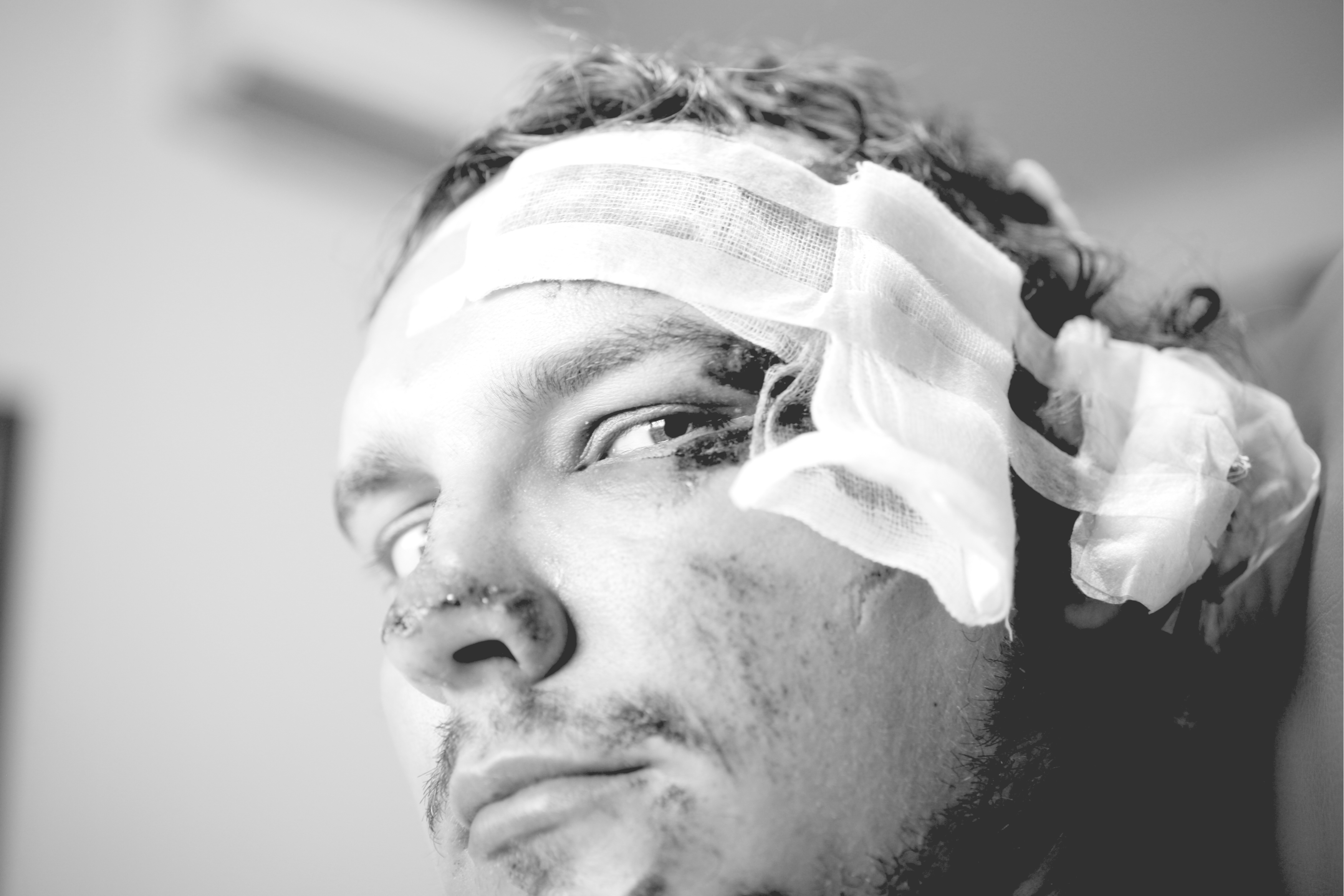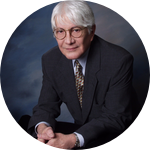Project Results
In-vitro evidence suggests that the curry spice curcumin has anti-inflammatory, anti-oxidant, anti- beta amyloid and cholesterol lowering properties. Since these properties are a common features of CTE and Alzheimer disease, studies have been initiated to test the hypothesis that curcumin may reduce formation of neurofiblllary tangles, which is an end-point feature of these diseases.
In order for this proposed therapy to be effective however, large amounts of the spice must be ingested to gain sufficient concentration in the blood-stream in order to cross the blood-brain barrier (BBB). Unfortunately, these high concentrations may themselves lead to inflammatory (gut) side effects. To circumvent this problem, curcumin was packaged in specialized nanocarriers and injected into BALB-c mice according to our Charles River Laboratories protocol. The purpose of this (electron microscopy) study was to determine if injectable, encapsulated, curcumin crosses the BBB.
Brains from mice, which had been injected with curcumin packaged in non-labeled microspheres, were tagged with anti-curcumin antibody and also labeled with nanogold.
Results.
Anti-curcumin antibody was detected in brains of two of the five animals. A typical low magnification field of one animal is shown in image attached with presence of curcumin shown in black dots within astrocyte cell bodies.
Future studies will be conducted to confirm these results.
About This Project
We have invented a Nanocarrier that targets the Immune System to deliver Curcumin, an anti-inflammatory agent, to the brain for the treatment of neurodegenerative diseases, such as Chronic Traumatic Encephalopathy.
Our preclinical study at Charles River Labs and the U. of Arizona, is being conducted to establish proof of effective nanocarrier delivery of Curcumin to the cells of the brain damaged by repeated traumatic athletic injuries to the head.
Ask the Scientists
Join The DiscussionWhat is the context of this research?
The anti-inflammatory activity of Curcumin has been shown to be capable of interacting with molecular targets involved in inflammation. Anti-Inflammatory Properties of Curcumin
A drawback to clinical use is its poor solubility, inability to be absorbed orally, rapid metabolism, reduced systemic bioavailability, and inability to cross the Blood Brain Barrier (BBB).
We reformulated Curcumin into a nanocarrier to be administered subcutaneously to enter lymphatic immune myeloid Dendritic Cells (mDCs) that cross the BBB and shuttle Curcumin to the brain.
This study will give objective proof of targeting brain cells associated with inflammatory degeneration, namely the astrocytes and microglia.
What is the significance of this project?
"CTE is a progressive degenerative disease of the brain found in athletes and others with a history of repetitive brain trauma, including symptomatic concussions as well as asymptomatic subconcussive hits to the head. It has been diagnosed in former amateur and professional contact sport athletes as well as military veterans" (and car crashes). https://www.bumc.bu.edu/busm/2...
"Given the millions of contact sport athletes and military service members exposed to repetitive head impacts each year, CTE has become a major public health concern".
Because Curcumin has striking anti-inflammatory activity, being able to successfully target the brain in head trauma from any cause may offer significant help in reducing the development of CTE.
What are the goals of the project?
1. To evaluate the efficacy of our proprietary nanocarrier delivery of Curcumin across the Blood Brain Barrier.
2. To show uptake of Curcumin by astrocytes and microglia, cells associated with inflammation and neurodegenerative changes and dementia.
3. Provide data for an extended preclinical study in preparation for a human clinical trial of Curcumin in early and late Chronic Traumatic Encephalopathy (CTE).
4. Because abnormal protein tau has been demonstrated in CTE as well as Alzheimer's and Parkinson Disease, our next study will evaluate nanocarrier delivery to the brain of the anti-tau drug Paclitaxel for a potential combination therapy with both nanocarrier-delivered compounds in all three neurodegenerative diseases.
Budget
Our plans for clinical development require this essential study to prove our delivery system can effectively target Curcumin to the brain.
A follow-on preclinical study with nanocarrier targeted curcumin will be designed to prove safety and efficacy, dosage, and pharmacokinetic data. These data are required for an application to the FDA for a Phase I human clinical trial for people engaging in athletics with repeated head trauma showing signs and symptoms of early dementia.
Endorsed by
 Project Timeline
Project Timeline
October 30, 2017 begin delivery of Curcumin encapsulated in the CLR-Targosphere Nanocarrier delivered from Rodos BioTarget GmbH in Hannover Germany.
November 15, 2017 deliver brain specimens to U. of Arizona School of Medicine for microscopy.
December 15, 2017 evaluate microscopic findings and deliver report.
Oct 20, 2017
Project Launched
Oct 30, 2017
October 30, 2017 begin delivery of Curcumin encapsulated in the CLR-Targosphere Nanocarrier delivered from Rodos BioTarget GmbH in Hannover Germany.
Nov 15, 2017
November 15, 2017 deliver brain specimens to U. of Arizona School of Medicine for microscopy.
Dec 15, 2017
December 15, 2017 evaluate microscopic findings and deliver report.
Meet the Team
Affiliates
Team Bio
Science Advisory Committee:
Sean M. Sullivan, Ph.D. Chairman; Nanocarrier Drug Development and Manufacturing; Co-Inventor of the C-Lectin Receptor Nanocarrier.
Robert Gieseler, Ph.D. Consulting Scientist, Targeted Drug Delivery and Immunomodulation; Co-Inventor of the C-Lectin Receptor Nanocarrier.
Alain Rolland, Ph.D. Consulting Scientist, Oncology Drug Development and Marketing
William A. Day, Ph.D. Cellular / Molecular Medicine
Michael Scolaro
Dr. Michael Scolaro, Founder, Chief Scientist Augustus BioTarget
Dr. Scolaro began research on targeted drug delivery with scientists Dr. Sean M. Sullivan, Ph.D., and Dr. Robert K. Gieseler, PhD. in 1989. Their first study was published in 1992 on inhibiting HIV-1 proliferation using liposome-encapsulated sense DNA: “Inhibition of HIV-1 Proliferation by Liposome Encapsulated Sense DNA to the 5’ tat Splice Acceptor Site” (Antisense Research and Development, vol. 2) 1992. Targeted Treatment of Neurodegenerative and Oncologic Diseases with Curcumin
This work provided the groundwork for his focus on targeted delivery of therapeutics begun at the 501 c 3 nonprofit foundation Let There Be Hope, and subsequently developed at Rodos BioTarget GmbH in Hannover, Germany (www.biotargeting.eu)
Establishing a clinical practice while also a Director of AIDS Research at the Los Angeles Oncologic Institute at St. Vincent Hospital, he dedicated his research to developing targeted treatments for people with HIV/AIDS, cancers, and allied disorders. The earlier focus on antiviral drug treatments expanded into targeted drug delivery and the invention of the CLR-TargoSphere® drug delivery technology with collaborators, Dr. Sean Sullivan and Dr. Robert Gieseler, currently being developed for targeted treatments to the brain for neurodegenerative diseases.
Additional Information

New Study of 111 Deceased Former NFL Players Finds 99 Percent Had CTE
Nearly every former National Football League (NFL) player who played at least one regular season game and whose brain then was donated for research was diagnosed post-mortem with Chronic Traumatic Encephalopathy (CTE). Among former college football players, those numbers were slightly less at 91 percent.
The findings of the largest CTE case series ever published, which appear in the Journal of the American Medical Association (JAMA), suggest that CTE may be related to prior participation in football and that a long duration of play may be related to substantial disease burden.
Researchers from VA Boston Healthcare System (VABHS) and Boston University School of Medicine (BUSM) studied 202 deceased American football players whose brains were donated for research. They found CTE in 177 American football players across all levels of play (87 percent) including: 110 of 111 National Football League players (99 percent); seven of eight Canadian Football League (88 percent); nine of 14 semi-professional players (64 percent); 48 of 53 college players (91 percent) and three of 14 high school players (21 percent). CTE severity was distributed across the highest level of play, with all former high school players having mild pathology and the majority of former college, semi-professional and professional players having severe pathology. The study data are different from previously released data as the inclusion criteria were more refined; including requiring whole brain analysis, as well as defining NFL players as having played one play in a regular season game.
“We found cognitive, mood and behavioral symptoms were very common, even among players with mild CTE tau pathology. This suggests that tau pathology is only the tip of the iceberg and that other pathologies, such as neuroinflammation and axonal damage, contribute to the clinical symptoms,” explained co-first author Jesse Mez, MD, BUSM assistant professor of neurology.
“The finding of early CTE pathology in high school and young collegiate players emphasizes the urgent need for longitudinal, prospective, multicenter studies to identify young players at risk for CTE as well as treatment strategies and comprehensive care for players who are suspected to have CTE during life. It is no longer debatable whether or not there is a problem in football; there is a problem. Through this study, we have identified meaningful opportunities for detection, prevention and multiple targets to slow or stop CTE, and it is time to come together to find solutions,” said corresponding author Ann McKee, MD, Director of BU’s CTE Center and Chief of Neuropathology at VABHS.
“This study nearly doubles the number of confirmed cases of CTE in the world’s literature, and represents a significant advance in our understanding of the disease,” said co-first author Daniel Daneshvar, MD, PhD, who is now completing his residency in physical medicine and rehabilitation at Stanford University.
The study authors wish to stress the ascertainment bias associated with participation in a brain donation program, and the lack of a comparison group representative of all individuals exposed to American football. In addition, the majority of the brain bank donors in the study played at the college or professional level, while most American football players play only on youth or high school teams. These limitations preclude estimation of the risk of participation in football and the development of CTE. Estimates of prevalence also cannot be concluded or implied from this study.
VA and BU investigators are committed to research on athletes who have died with CTE as it allows insights into the clinical symptoms of CTE and methods for detection of CTE during life, which are essential steps in developing effective treatments. This work not only enables better diagnosis of CTE in athletes but also enhances recognition and treatment of veterans, service members and other individuals who suffer repetitive head injury.
New Study of 111 Deceased Former NFL Players Finds 99 Percent Had CTE
Posted Tuesday, July 25th, 2017 in Featured, Research
The Laboratories of Charles River:
October 13, 2017
Charles River Discove1y Services-NC (CR DS-NC) Animal Care and Use Committee
Amendment to Animal Study Protocol #980701: Evaluation of Novel Compounds in Tumor Growth Delay Assay.
Dr. Scolaro,
The CR DS-NC Animal Care and Use Committee has approved the expedited review of the following amendments to the animal study proposal indicated above.
• CT26-e428
| Expedited approval indicates that these amendments meet institutional requirements in the handling and care of experimental animals. As Principal Investigator, you are responsible for ensuring that studies are conducted in accordance with Public Health Service and CR DS-NC policies and guidelines. |
| Shawndel Arneson IACUC Chair |

Charles River has a staff of over 150 veterinarians and over 1000 animal care professionals dedicated to the care and well-being of animals at its facilities globally.
Their Humane Care Initiative includes establishing industry best practices and providing education and training to heighten awareness of the importance of humane care, fostering animal welfare worldwide.
Together, we comply with standards of practice and accepted guidance for the care and use of laboratory animals. Moreover, Charles River participates in voluntary oversight programs, such as AAALAC, to assess our compliance through in-depth evaluations of our facilities and practices.
Project Backers
- 13Backers
- 100%Funded
- $6,456Total Donations
- $496.62Average Donation

